Ancient stones were transformed into golf course signs near St Andrews.
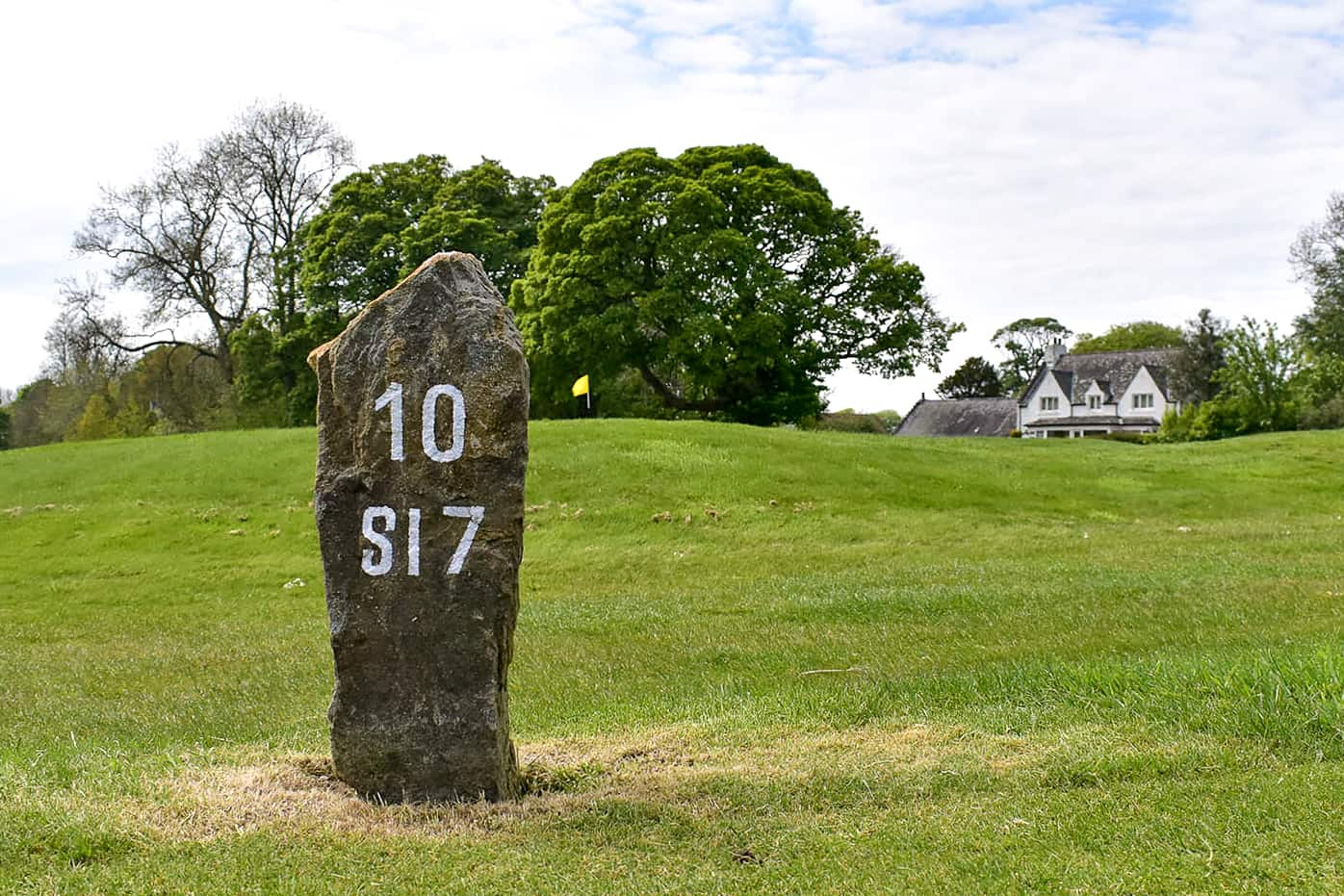
In early April 2021, Stuart Gillett contacted me.
Stuart is a founder member of Legacy Golf Advisors based in Hampshire. He advises the golf industry globally, by helping the management and sustainability of golf courses.
Stuart explained there were over thirty large stones which had been selected for planting all over Charleton Golf Course, near St Andrews. He asked how to transform the reclaimed stones into natural exterior signs.
The stones’ natural beauty would complement the surrounding estate, as well as standing up to constant bashing from lawnmowers.
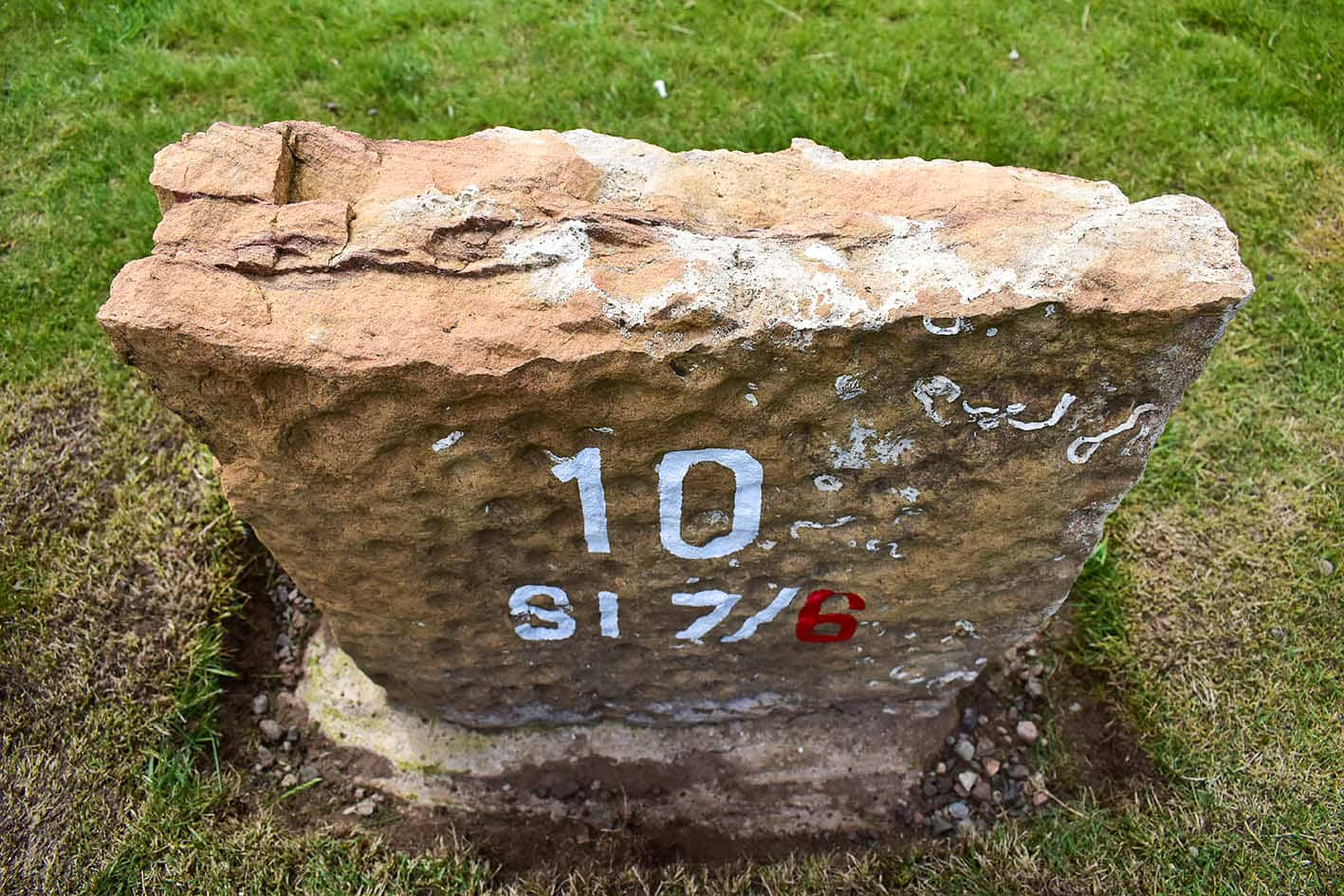
Each stone is placed as a tee marker, with numerals informing golfers of their score for match play. Several stones are also used for wayfinding signs at pathways. These signs would direct golfers to the next tees.
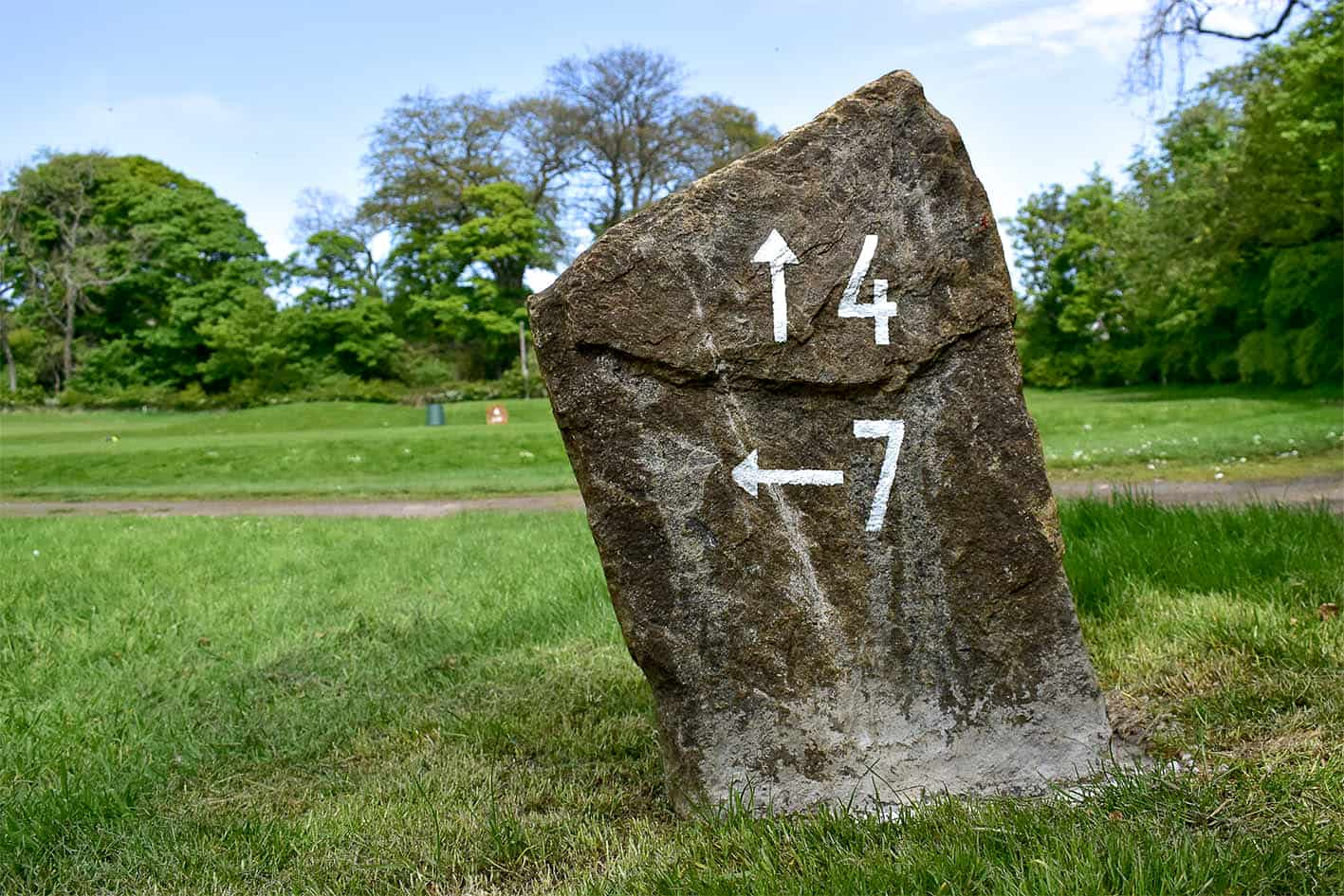
With an understanding of the project and budget, I began to design and research materials for lettering the stone surfaces.
The typeface used would be vital for readability, especially at distance. I selected a style which would still remain readable on the uneven surface of each golf course sign.
I thought about how to produce a sharp edge for the numerals and letters on the stones’ rough and porous surfaces. My initial proposal was to use high tack vinyl and heat mould the vinyl into the stones’ nooks and crannies. The high tack vinyl had been used on similar surfaces with excellent results.
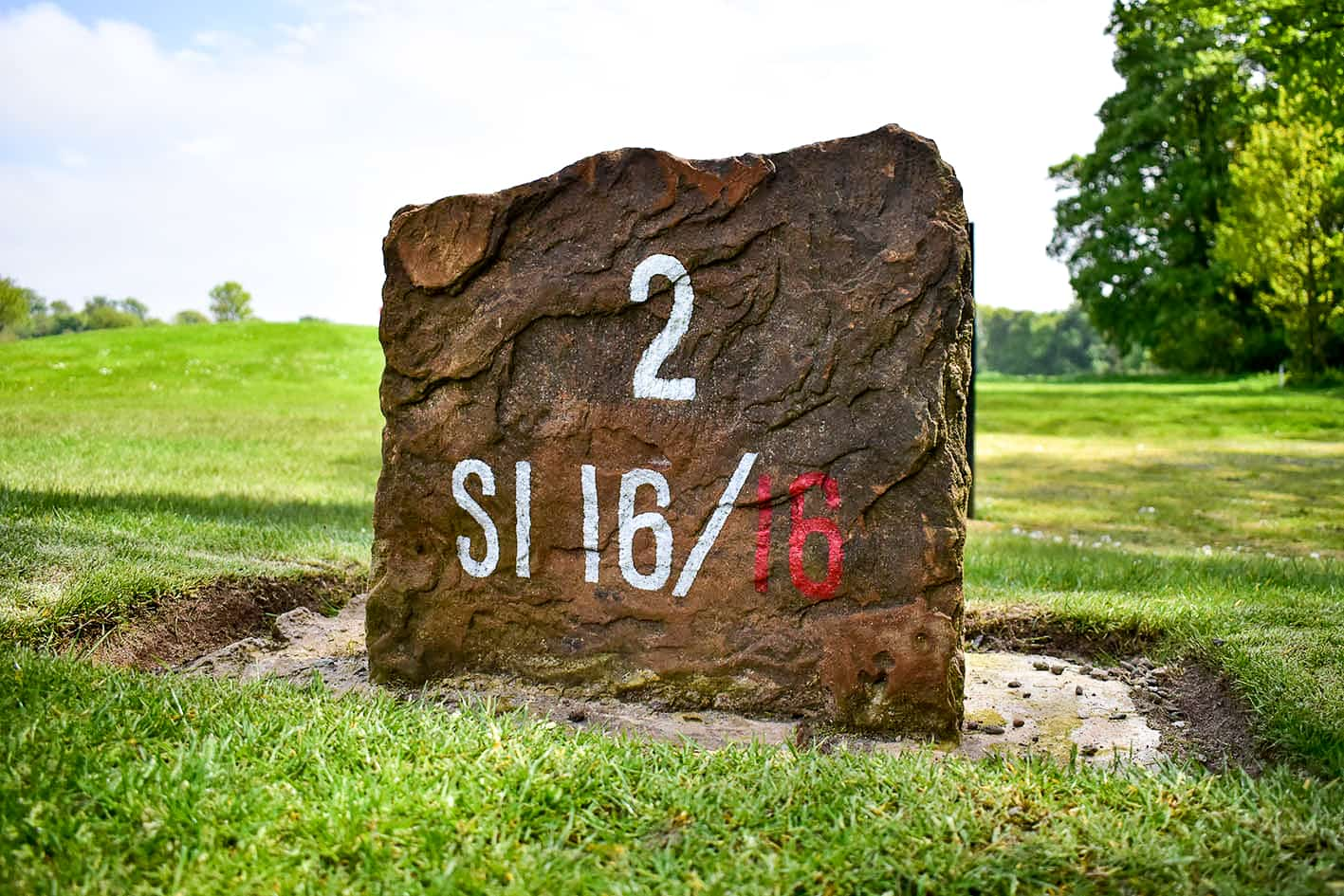
Another option I proposed was to use high tack vinyl stencils. The stencil would be an efficient method to layer paint on rough surfaces. Quickly enabling a base coat of masonry primer before a top coat.
The vinyl options didn’t match Stuart’s vision for the signs.
‘We are really after a very rough and ready look, although we don’t want it to look too amateurish’, said Stuart.
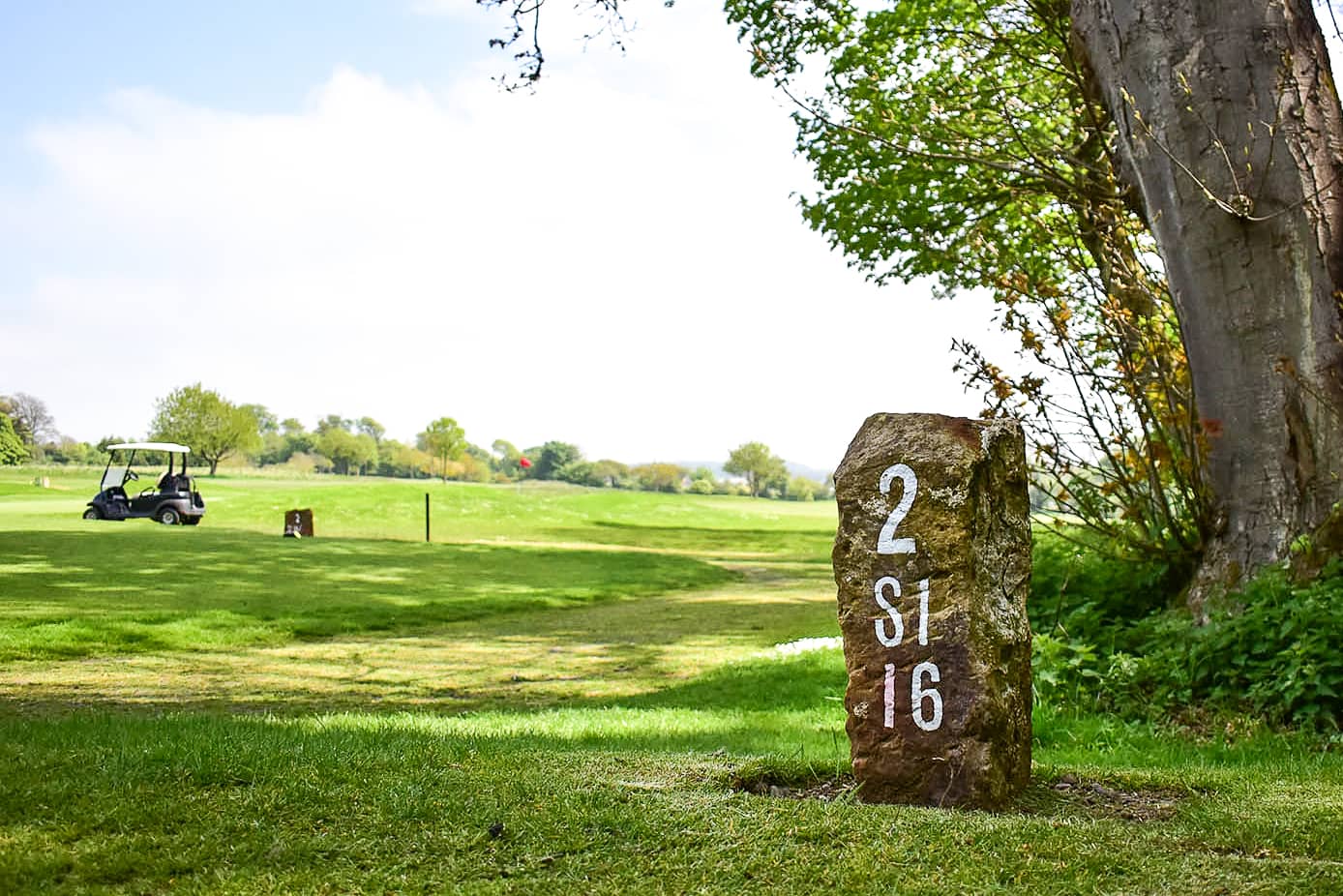
We agreed that hand lettering would be the preferred look. However, I was still concerned about the stones’ surface.
I searched for a suitable signwriting enamel which would withstand the elements. In addition, the paint had to flow easily and cover solid – preferably in one coat.
Equally, the golf course signs had to be legible. The porous surfaces would affect the sharpness of the painted edges. If the paint was too thin, it would risk seeping into the pores.
I sourced a signwriting paint from Ronan, an American paint manufacturer. Keen to try the paint on the surfaces, I arranged to visit the golf course to paint a sample of the signs.
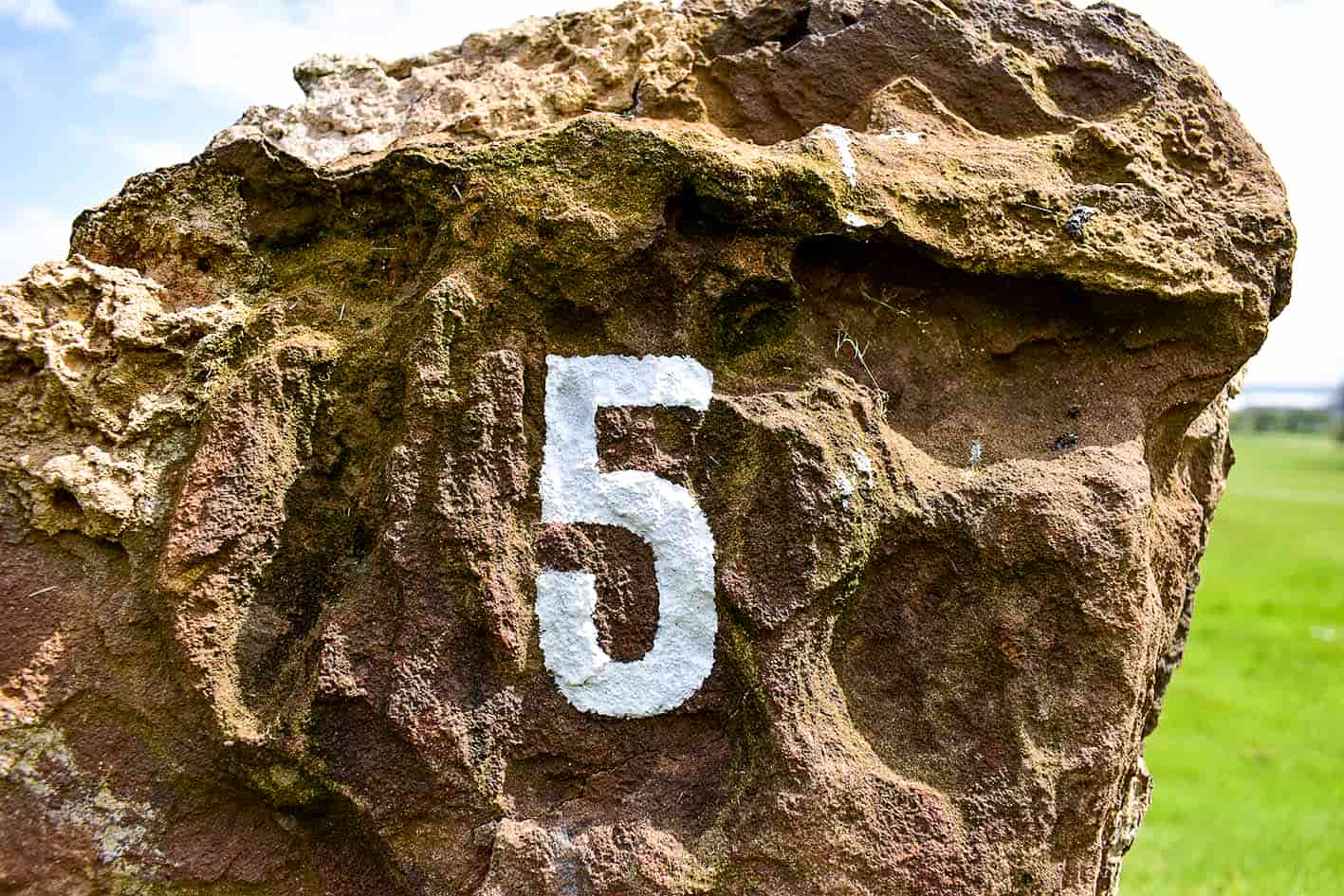
To demonstrate how the numerals would appear, I painted a large red sandstone. The paint rapidly sucked into the surface.
Both Stuart and Brian, the head greenkeeper were satisfied with the appearance. Brian planned to arrange the stones over the forthcoming weeks. I scheduled to return as soon as the weather became drier and warmer.
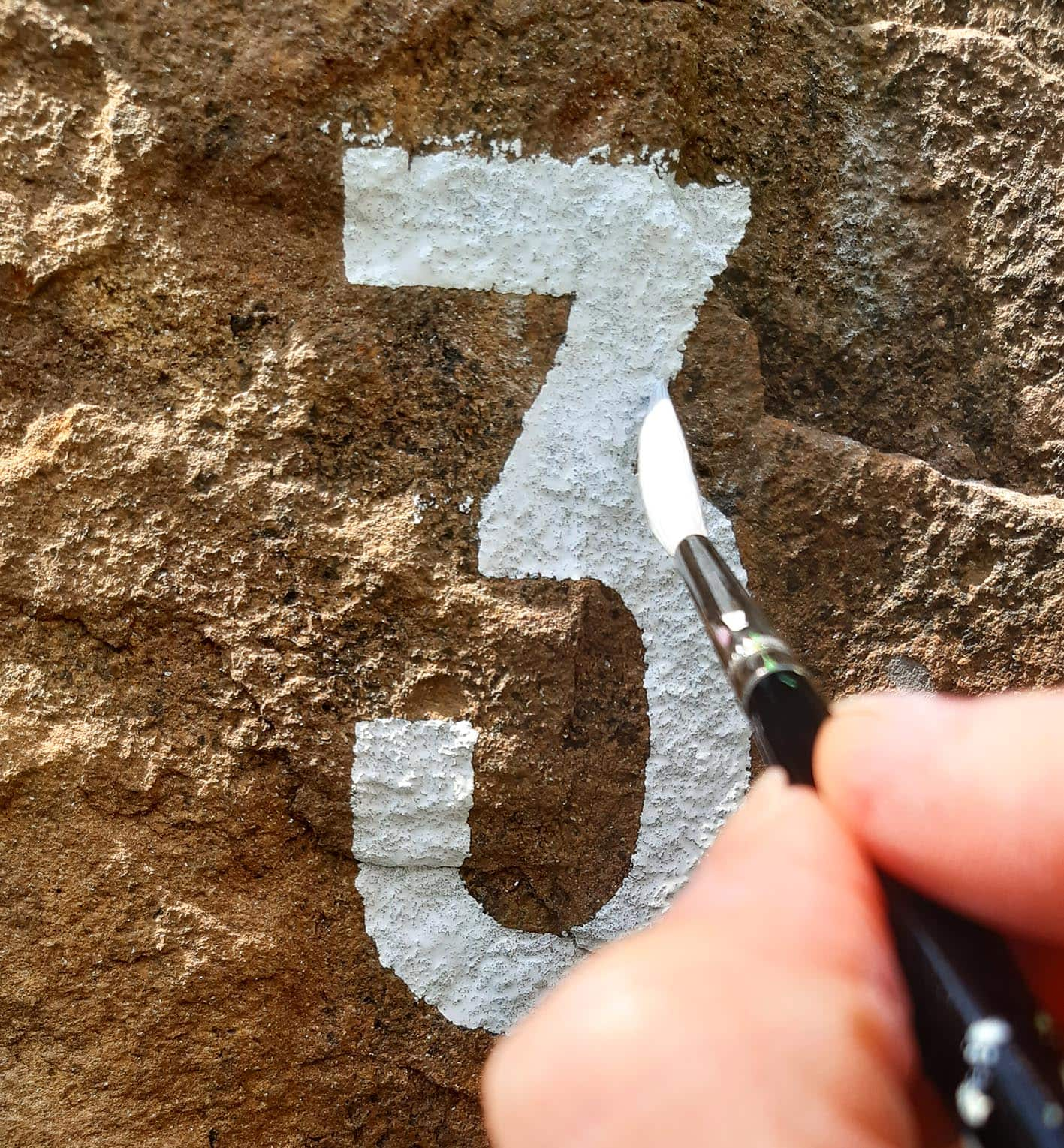
In early May 2021, I began to paint the stones.
With the aid of a buggy, I traversed around the golf course, painting each sign. The numerals were carefully chalked onto each surface, avoiding any large cracks where possible.
Day one was slow. The paint absorbed into the stones almost immediately. Lying at ground level was also difficult for manoeuvring the brush.
And then it began to rain…
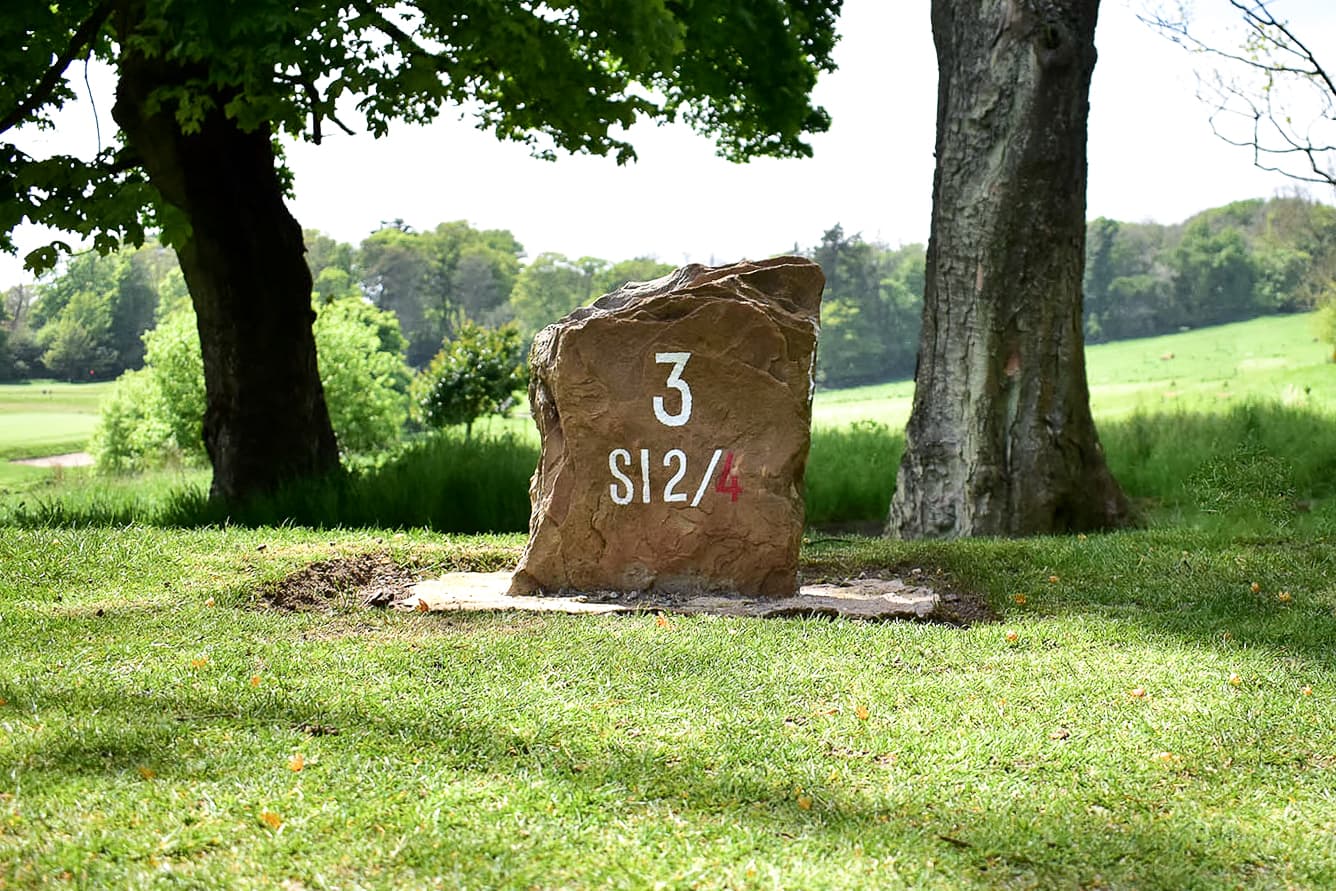
With the help of my dad, Brian, we visited ten days later.
The weather had been inconsistent with rain and partial sunshine. Painting onto the wet surface was out of the question. We had to be assured of dry weather on the golf course, before scheduling our return.
Over two days, we made faster progress. We used different brushes too, which held more paint in the bristles. The new brushes were a game changer.
Eventually, the stones were transformed into unique signs across the golf course. Simultaneously durable, natural and legible.
Golfers, Stuart and the team at Charleton Golf Course were delighted with the result.
Contact me to discuss more natural materials for your signs.